72 Hours in Peru - The Land of the Inca | Cusco & Sacred Valley: Písac, Urubamba, Ollantaytambo, Machu Picchu
 |
|
Manco Cápac: first governor and founder of the Inca civilization in Cusco
By Cusco School - Unknown source, Public Domain, Link
|
Once upon a time Sun God Inti and Moon God Mama Quilla had enough of uncultured cave-dwelling hunter-gatherer humans living around lake Titicaca and sent their son Manco Cápac and daughter Mama Ocllo to bring law, order and civilization to them. Before sending them off, Inti gave Manco a golden staff called the tapac-yauri instructing him to use it to find fertile land and set up a kingdom.
Manco and Ocllo then walked out of a netherworld cave and brought civil order, education, arts and religion in the form of worship of the Sun and fire as Gods to the people. They also taught them how to use fire, tools and weapons to defend themselves as well as techniques of cultivation and textile production.
In the meanwhile, Manco embarked on a journey across the mountains and valleys of the Andes looking for the perfect place to establish a kingdom. Coming across a remarkably beautiful valley, he thrust the tapac-yauri into the ground. The tapac-yauri sank easily. This was the sign he was looking for, and he built his city right there, calling it Cusco. The kingdom of Cusco was thus established with Manco Cápac as the first Sapa Inca.
Eventually Manco and Ocllo had a son named Sinchi Roca who would become the Second Sapa Inca. Manco Cápac had 400 children to carry on his blood line before he died. Cusco's Temple of the Sun called Coricancha (Temple with Golden Walls) marks the location of Manco's passage. His mummified remains were later moved from Cusco to the Temple of the Sun on Isla del Sol by the the outstanding 9th Sapa Inca Pachacuti Inca Yupanqui. A statue of Manco was instead erected in Cusco.
There are various, some of them incompatible, versions of this legend of origin of Manco Cápac and the kingdom of Cusco. It is even possible Manco Cápac did not actually exist but is a product of mythology. But the layers of stone walls at the bottom of buildings on narrow stone alleys still present in Cusco and the jaw-dropping ruins of Inca complexes that we visited away from the city remain a testament to the heights the Inca civilization reached in just over three hundred years before being snuffed out by invading and destructive Spaniards.
The 9th Sapa Inca Pachacuti Inca Yupanqui was another towering figure in Inca history. As we would learn in Pisac, Pachacuti was the emperor who annexed territory and people outside the Kingdom of Cusco to transform the kingdom to an empire. The city complexes of Pisac, Ollantaytambo and Machu Picchu are among those built by Pachacuti as he expanded the empire. It is believed Pachacuti is buried under the Temple of the Sun at Machu Picchu.
The theme of Spanish destruction of a people and civilization that was at the time far advanced and richer than their own resonated in our minds throughout our entire time in the incredible country of Peru.
A Country in Violent Socio-Political Unrest
We traveled to Peru during a period of violent political protests. Tourists had to be evacuated by helicopter just two days ago as the country devolved into massive demonstrations, roadblocks, airport, train and road closures. Injury and death tolls of protestors in the forceful government response at the hands of riot police and military forces were mounting. There were news reports of stranded American tourists at Machu Picchu hiking over 32KM along rail tracks to reach helicopter extraction points.
On December 7, 2022, President Pedro Castillo was about to be impeached for the third time when he announced plans to dissolve Congress and install an emergency government, put the country under curfew, suspend and rewrite the constitution and hold fresh elections. Peru’s Ombudsman described this as an “attempted coup d’état.” (CNN). The Peruvian Congress responded by removing and arresting Castillo sentencing him to 18 months of pre-trial detention on rebellion charges. President Dina Boluarte took over with approval of the Congress. Supporters of ousted Castillo, especially among indigenous Peruvians in southern Peru with affiliation to the political left and far-left, felt disenfranchised and organized to protest against the ouster and detention of Castillo, demanding resignation of the new President Boluarte and Castillo's reinstatement. President Boluarte's government reacted by deploying armed forces and Peruvian police whose aggressive actions continue to result in injuries and death. As I write this, protestors are attempting to "take over" the capital city of Lima!"
I was continuously in touch with Incarail and we owe our fortuitously successful visit to them. Their advice for us was that there would be a break in protests and trains would run over the Christmas and New Year holidays, that they had repaired the sabotaged tracks, and that our trip with Incarail on December 23-24 was on.
On the positive side, this meant we had the rare opportunity of being among only a handful of visitors and the only hotel guests at places that ordinarily draw 7,000 tourists every day!
During our brief stay in Peru (we left for Bolivia on December 25), we learned from multiple locals that the demonstrations would start back up on January 4, 2023. This indeed turned out to be true. As of Jan 13, 2023 Peru had officially declared emergency with curfews in effect and Cusco airport and train station closed with all tourism suspended.
Here is a complete map of our expedition to Peru.
December 21, 2022
We took a Uber to BWI and boarded a series of Delta and LATAM flights starting 19:39 to reach Cuzco the following morning (December 22) 10:05 with transfers at Atlanta and Lima.
I put my new mobile phone camera stand to test at the BWI airport. It came with a bluetooth remote for remote triggering the camera. We were going to the land where Tintin's adventures of the Seven Crystal Balls and the Prisoners of the Sun were set, making a photo with Tintin comics imperative to mark the start of our journey!
The flights were uneventful. The Starbucks at Lima airport with Inka chips and Inka corn were refreshing.
December 22, 2022
Cusco, Peru (13.5° S, 71.9° W, altitude 11,152 feet)
Summer Solstice in Southern Hemisphere!
We landed at Alejandro Velasco Astete Cusco International Airport (CUZ) in a miraculous lull in the middle of Peru's political turmoil and violent demonstrations. The airport was closed only a couple of days before but was reopened with strong military presence just before we arrived. Peru's security forces in military fatigues and automatic weapons welcomed us to the baggage carousel at the eerily empty airport, from where we had to walk out to the outside gates at the boundary walls on Av. Velasco Astete. Only ticketed passengers were being allowed in and out, on foot, from the external gate.
The driver of our hotel-transfer minivan was standing with a placard outside on Av. Velasco Astete. We walked a couple of blocks pulling our luggage to an alley where he asked us to wait while he went away to fetch his minivan from wherever he was parked at.
He arrived with the minivan around 15 minutes later and we successfully checked in to Yawar Inka Hotel. I had carefully selected this hotel for its location: three minutes walk to Estacion Wanchaq from where the Perurail Titicaca train to Puno is boarded (though we would not get to board that train), and fifteen-minute walk along the arterial Av. El Sol to Plaza de Armas - the colonial central plaza of Cuzco.
We were the only guests at the hotel, that too on the first day of Santurantikuy!
Coca Tea
We had the first of endless cups of Coca Tea at the hotel. Considered sacred from ancient times by folks of the Andes, Coca leaves induce biochemical changes that enhance physical performance at high altitude. Chewing Coca leaves is rampant in the Andes, and is considered addictive and responsible for long black hair common among indigenous people.
Yellow Fever Vaccination in Cusco, Peru
Many countries require an International Certificate of Yellow Fever Vaccination for entry. Cusco is one the places where this vaccine is easily obtained. I had set up an appointment with Inmuno Farma for our family of four. They offer the convenience of coming to the hotel to vaccinate and issue official international certification. A very nice nurse and a gentleman arrived at our hotel punctually, vaccinated us with Stamaril, and gave us our certificates. It was a nice and smooth experience with no discernible side effects later. Even with the on-location service, the vaccines cost us a fraction of the money charged by travel clinics in the United States. Inmuno Farma are highly recommended (I am not affiliated with them, this is an independent opinion).
Walking around Cusco
The location of Cusco has been continuously inhabited by humans for at least 3,000 years making it one of the oldest living cities in the Americas. The city flourised as capital of the Inca Empire of Cusco (c.1200 - 1533 CE) till the Inca civilization was destroyed when Spaniards invaded. The original main plaza was constructed by founding Inca emperor Manco Cápac. Unfortunately little of Cusco's original Inca complex survives, having been overlaid with typical Spanish architecture and cathedrals which I have little interest in. As we would see shortly, only a few stone foundations and streets built by the Incas are still visible in Cusco.
Our hotel doors lead out to the wide Av. Pardo Paseo de los Héroes - a wide boulevard with a median but with huge gaping utility construction holes allowing only pedestrians navigating carefully around the mostly unmarked excavations. There are statues along the median and important looking villas, one with security forces guarding it two houses down from the hotel. It will look awesome when all the construction is over.
The first right on Av. Garcilaso gets us to the arterial Av. El Sol. Taking a left on El Sol, we crossed a post office (Serpost - Servicios Postales del Perú) to reach Jardín Sagrado (Sagrado Garden). It is a large green garden where events are held, at the time featuring a pretty Christmas tree with decorations. There is a convenient ATM at the corner of the post office from which I withdrew some Peruvian Sol cash.
As a proud Hughes Network Systems alumnus, I was happy to see a HughesNET advertisement on Av. El Sol. I had no idea Hughes provides satellite internet services in Peru. There was also a facebook expresswifi advertisement, but I am not sure what that service is.
Behind Jardín Sagrado, noticing still-visible remnants of Inca stone structures below typical Spanish buildings, we make a right towards them on C. Arrayanniyoq (Route 3S). Crossing the Iglesia y Convento de Santo Domingo de Guzmán (Convent of Santo Domingo) we walk the narrow alley to Plazoleta Santo Domingo featuring Limacpampa.
The current Santo Domingo plaza area was the grand central square of Inca capital Cusco where the Coricancha ("Golden Walls") temple stood representing full glory of the empire. It featured at the minimum walls covered with gold and a golden statue of Sun God Inti covered with jewels. Having set out but failed to destroy all of Coricancha, the Spaniards appropriated the stupendous volume of gold and jewels, even melting the statue of Inti. Then they built a Christian Convent of Santo Domingo on top of the remnants of Coricancha using material from the destroyed Coricancha. The original Spanish convent did not last long, falling apart in an earthquake in 1650. The current structure was then constructed to replace it, this one losing its bell tower and chapel in the earthquake of 1950 requiring re-rebuilding.
The narrow alleys around the convent seem to continue the pattern of Spanish construction over older Inca foundations displaying a level of stone construction much beyond the capabilities of the Spaniards. The alleys themselves look like Inca pathways, perhaps with water channels in the middle.
On reaching Plazoleta Santo Domingo, we make a right on Av Tullumayo.
From a tiny Claro mobile phone store there, we buy a SIM with a ridiculously cheap prepaid data plan probably in the range of S/10.00 for 750MB for five days plus S/5.00 for the SIM itself! We were asked for our passport details to make the purchase. Fortunately I had a photo of my passport on my phone, which was sufficient.
We also picked up some toiletries (toothbrush, toothpaste, deodorant) for the boy from a small general store next to the mobile shop before heading back to Av. El Sol.
In the evening, we headed out again towards Plaza de Armas. The streets were slightly less deserted and a few fellow tourists could be seen now. Holiday lights turned on at dusk. The majestic Palacio de Justicia, Consultorio Juridico Gratuito UNSAAC, Museo de Arte Popular and surrounding buildings along Av. El Sol leading to Basilica Menor de la Merced and Plaza de Armas looked festive indeed, though police in riot gear were guarding the steps of the Cusco Palace of Justice. We picked up cappuccino and ice cream on the way from one of the cafes along Av. El Sol.
Santurantikuy - The Famous Arts and Crafts Fair at Plaza de Armas, Cusco
From December 22 to 24 every year, Cusco's famous Plaza de Armas (Cusco Main Square) transforms into a giant arts and crafts fair called the Santurantikuy. A tradition from the 16th century, it is one of the largest fairs in Peru where local artisans set up rows of stalls selling authentic hand-crafted artefacts. In addition to bringing festive Christmas spirit, a mind-boggling array of hand-carved figurines of San José, Virgin Maria and Niño Manuelito along with Andean handicrafts were on sale. Vendors around also sold Christmas-special sweets and the warm rum punch called ponche. We were fortunate enough indeed to experience Santurantikuy.
I also got to play with an Alpaca!
And then, back to the hotel.
December 23, 2022
The first of our memorable two-day one-night IncaRail Machu Pichu multimode (van, train, bus) tour from Cusco.
A nice gentleman representing the tour met us at 7:25 AM sharp at our Cusco hotel. We gulped down Coca tea, left all of our luggage at the hotel except a small bag for the overnight and walked around and across Estacion Wanchaq to a van parked in front of Inka Express Tours on Av. El Sol.
We were the first passengers in the van. As the driver went around Cusco picking up a couple of more people, we got a great look at the city. The van coincidentally started by picking an Australian couple up from around Plazoleta Santo Domingo which we had walked the day before.
We also got another glimpse of the residual Inca structure of Coricancha below the Convent of Santo Domingo:
Eventually a bilingual tour guide boarded our van in front of the SUNAT (Superintendencia Nacional de Aduanas y de Administración Tributaria - Customs and Tax) building before heading out of the city.
We then started going up Route 28G north of Cusco city. The panoramic Cusco valley gradually came into view receding as we climbed up towards the Inca complex archeological site of Saqsaywaman sitio arqueologico de Llaullikasa.
We continued across the town of Ccorao, Institucion Educativa Inca Ripaq college, Cochahuasi Amimal Sanctuary and the village of Huancalli.
The Sacred Valley of the Incas
Just before reaching the city of Pisac, we stopped at Mirador Taray viewing point for our first look at the legendary Sacred Valley of the Incas - the fertile Urubamba river valley stretching from Pisac to Ollantaytambo. The rich soil has supported many civilizations from ancient times - Chanapata (800 BCE), Qotacalla (500 CE), Killke (900 CE) and Inca. (Ref: Wikipedia)
Pisac
The current Pisac city sits on the banks of Vilcanota river (another name for Urubamba river in these parts) in the Sacred Valley of the Incas. Crossing the bridge over Vilcanota, we stopped a bit in the famous Pisac market on our way back from the ruins for a little while. The deserted streets were devoid of the usual throngs of tourists due to ongoing socio-political crisis in Peru.
Inca Ruins of Pisac
Emperor Pachacuti Inca Yupanqui (1418 - 1472), ninth Sapa Inca of the Kingdom of Cusco, was a great conqueror who transformed the Kingdom to an Empire by annexation. Pachacuti conquered the area of Pisaq and constructed a great city complex starting c.1440 CE consisting of residences, citadel, astronomical observatory and religious sites. The wonder that is Machu Picchu was another estate of Pachacuti, as was Ollantaytambo, both of which we would visit next. (Ref: Wikipedia)
Pisac was a retreat for the royal family and entourage away from Cusco, a place to rest between wars, celebrate victories, perform rituals and religious ceremonies and take refuge in its safety when needed.
Francisco Pizarro and Spanish invaders destroyed the Pisac Inca complex (and numerous others) starting the 1530s. Such a remarkable city was not even chronicled by the Spaniards!
The current town of Písaq in the Sacred Valley below the ruins of the Inca complex was built by Viceroy Toledo in the 1570s. However, it would not be till 1877 that the Inca city of Pisac would be documented. Ephraim George Squier, United States Commissioner to Peru first described Pisac in his book "Peru - Incidents of Travel and Exploration in the Land of the Incas". At the same time, Austrian-French scientist-explorer Charles Wiener also visited Písac and chronicled his explorations in 1880 in his book "Perou et Bolivie". (Ref: Wikipedia)
Inca Burial Caves with Mummies
Large burial sites in the form of numerous caves are seen on mountains behind agricultural terraces of Inca complexes including Pisac. It is estimated about 5,000 of those caves in Pisac have been plundered by Spaniards for the goodies, but at least 5,000 more remained undiscovered, possibly more even today. (Ref)
The Inca concept of death is unusually fascinating. Instead of saying their goodbyes and creating some sort of memorials to remember the dead by and move on, the Inca dead continued to participate in the affairs of the living.
Andean civilizations have been mummifying their dead from about 2,000 years before the Egyptians. The Incas mummified their dead in layers of cloth and put them in fetal positions inside cave burial chambers. Food, tools, utensils and other useful items were wrapped and placed with them to make their return to this world easier. Gold and jewelry were also placed with the mummies of upper classes and royalty, resulting in Spaniards often throwing the mummies out of the caves and grabbing the valuable.
The cave burial chambers remained accessible to the Incas to place more mummies. They would also take mummies out for participation in celebrations and special events. Mummified ancestors would be paraded behind living emperors, for example, their history and achievements adding to those of the living. Even today on Dia de los Muertos (Day of the Dead) Peruvians gather around their ancestors' burial sites, sing and play music and have a meal with them before leaving them with food. (Ref: Smithsonian Magazine and Inkaterra)
Ollantaytambo Inca Ruins
From Pisac, we drove north on Peru Route 28B crossing the city of Urubamba to Ollantaytambo Inca ruins on the other end of the Sacred Valley of the Incas.
Another spectacular Inca complex with terraces leading up to a fortress and a temple, Ollantaytambo too was built by the 9th Sapa Inca - Emperor Pachacuti Inca Yupanqui. The especially strong walls of the complex were built of stone moved and lifted up from the opposite side of Urubamba river, a feat that required diverting the river itself! In addition, Llamas and Alpacas are not load-bearing animals, and all stone movement was accomplished with human labor.
Later on, this is where Spanish invasion-era Inca emperor Manco Inca Yupanqui (1515 - 1544) famously defeated the invaders using a brilliant move of flooding the valley below via carefully engineered channels.
Though the Spaniards would return with greater force later and continue their destruction, the remains today are still a testament to the achievement of the Incas. (Ref: Lonelyplanet, Wikipedia)
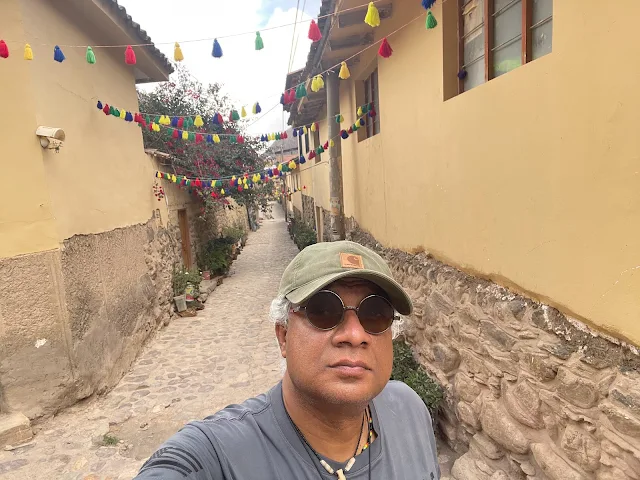
Ollantaytambo Wall of the Six Monoliths: Temple of the Sun (Templo del Sol)
The Templo del Sol, also known as Wall of the Six Monoliths, at Ollantaytambo ruins is of special historical interest. It is hypothesized this wall was actually built by the much earlier Tiwanaku (Tiahuanaco) civilization whose central city was at over 13,000 feet at the Tiwanaku complex on southern basin of lake Titicaca far away in Bolivia, dated to c.110 BCE. We visited Bolivia including Tiwanaku a few days later, described in this post.
Urubamba and Hotel San Agustín Monasterio de la Recoleta Boutique: Night Halt
Having completed a long day of marvelling at Inca complexes, we drove south on Rt. 28B back to Urubamba and checked into the remarkable San Agustín Monasterio de la Recoleta boutique hotel.

Urubamba has a big mysterious "711 DIMA" sign etched on a hill. It turns out there is a school number 711 called DIMA. As a right of passage, students of that school climb up the hill and sculpt the number and name on the hillside. This is not easy and even dangerous. (Ref: Flickr)
Once again, we were the only guests checking in at the San Agustín Monasterio de la Recoleta monastery, and the only family dining at their luxurious restaurant. We had the entire monastery to ourselves! After dinner we hit luxurious beds in large comfortable suites of the monastery, tired and easily drifting off to sleep dreaming about the train to Machu Picchu and the wonder of the world planned for the next day.
December 24, 2022
4:30 AM, rise and shine! Recuperated and rested, we check out of San Agustín Monasterio de la Recoleta monastery hotel, Urubamba and get back on the road: North Route 28B to Ollantaytambo Train Station.
Incarail 360° Machu Picchu Train: The best scenic train in Peru
We reached the Incarail terminal at Ollantaytambo at 6:30 AM with ample time in hand for the 7:22 AM 360° Machu Picchu Train. We were early enough to watch the train before ours depart.
There is a free and convenient Left-luggage service to the left of the ticket office across the street from the passenger waiting rooms. We deposited our overnight luggage there.
We grabbed some excellent coffee and pastries from the "Mayu Coffee Bar Station" next to waiting rooms and settled down to wait to be called to board the train.
When it was time, a group of happy Peruvians clad in bright traditional dresses arrived at the waiting room to usher passengers to the train with much singing, dancing and beating of drums along the short walk to the platform. We did not know this was part of the package and were pleasantly surprised!
There were only a handful of passengers due to political turmoil and violent social unrest in Peru. We shared our entire carriage with just one other family visiting from Australia (not the same Austrailian tourists we met on the van before).
At last we were on the famous Inca Rail 360° Machu Picchu Train that easily makes it to any list of most scenic railroads of the world! (Also see White Pass & Yukon Route Railway)
Midway through the train journey, an actor and actress in traditional Peruvian attire presented a little play, acting out a Peruvian love story of how a girl who first rejected a lover changes her mind when the lover does some special things.
The one-and-a-quarter hour train journey ended with the train pulling into Machu Picchu station in Machu Picchu pueblo (town).

Aguas Calientes: Machupicchu Town / Pueblo / Village
Machupicchu town (sometimes called Machupicchu village) used to be called Aguas Calientes due to the hot springs around. It did not exist before 1920 when it started off as a hub for rail construction workers. It morphed into a tourist town on completion of the railroad in 1931. The only main street Av. Pachacutec runs between the natural hot spring baths and the main square next to the train station.
Devoid of history and with the unmistakable vibe of a tourist town that sees 7,000 visitors pass through every normal day, Machupicchu town is still pretty enough for strolling around. Again, streets that overflow with tourists were empty due to Peru's political crisis.
From the station, a bridge across the Vilcanota river (Urubamba river) takes us into the main square and bus stand.
It is here we get on a bus to Machu Picchu. There is also a 6 KM / 3.7 mile trail that some people take instead of the bus.
Machu Picchu (Quechua: "Old Mountain")
Our bus goes up the zigzagging Hiram Bingham road to the entrance of the ruins. The road (and the Perurail train) are named after American archaeologist and United States senator Hiram Bingham who exposed Machu Picchu to the world with his superhit book "Lost City of the Incas" after his travels in early 20th century. However, Bingham was unlikely to be the first westerner to have reached Machu Picchu. (Ref: Britannica)
House of the Guardian to the Funerary Rock at Machu Picchu
We hike up to the Casa del Guardián de la Roca Funeraria to meet llamas and take a couple of foto tipica of the man-made wonder of the world! As luck would have it, we were there on a clear sunny day with just a couple of hundred visitors across the sprawling complex for the entire day.

Machu Picchu Complex Map and Tour Route
Old City Gates to Machu Picchu
We then headed down to Puerta de la Ciudad - the old city gates to Machu Picchu.
There are ruins of residences - big houses to the left of and below the El Templo del Sol (Temple of the Sun). Streets with spacious multi-storied houses on both sides are easily identified.
We headed to the Quarry Group from where building material for the city of Machu Picchu was extracted. There is still unfinished stone lying around. Transporting stone was a human endeavor for the Incas who neither used wheeled vehicles nor load-carrying animals. Llamas are incapable of carrying more than about 40 pounds anyway.
Oh - hi there! We met our first Chinchilla - the native rodent of the Andes - on our way to the Agricultural sector.
Agricultural Sector and Terraces
The iconic farming terraces of Inca complexes had to be cut into the solid rock of the mountains. The Incas cultivated over 100 kinds of food and medicinal plants, including corn, squash, tomatoes, peanuts, and cotton. Inca farmers were the first to grow potatoes. (Ref: Britannica)
Sacred Plaza and Temple of the Three Windows
With great views of snow-capped mountains and the Vilcanota (Urubamba) river below, Plaza Sagrada has the main temple in the north (featuring another happily sunbathing Chinchilla) and various temples around. The house of high priest is to the south of the plaza. The famous Templo de las Tres Ventanas (Temple of the Three Windows) marks the East. Inti Raymi (Festival of the Sun) and various rituals were held here. The sun dial and degree of precision construction with polished stone continues to amaze!
Intihuatana and main Square (Central Plaza)
We continued east crossing the fascinating Intihuatana stone astronomical clock, cosmic and planetary calendar, sundial and ceremony site.
The courtyard of the Sacred Plaza is a big open space. All Inca complexes feature such large squares. Citizens would gather here for ceremonies or to hang out just like the plazas of modern cities.
The Sacred Rock
This Roca Sagrada (Sacred Rock) at the north end in the urban sector replicates the mountain behind it. Some see a crouching puma instead.
The King's Tailors
The Inca King would wear a new dress every day. The custom tailors and clothiers of Machu Picchu worked here to make that happen.
We had one of the good views of Huayna Picchu (Quechua: Wayna Pikchu, "Young Mountain" or "New Mountain") rising up above the city with temples and terraces at its top. The high priest lived there with virgin girls. He descended down to the city every morning to signal the rise of the sun and start of the day. Obviously he had to get back to the top of Huayna Picchu every day too!
The Vilcanota (Urubamba) river bends around this iconic mountain. 400 visitors are allowed to hike up to the top and Huayna Picchu every day, and some have posted videos of the hike. We did not climb up there.
As we made our way to the Condor Temple, we get some more magnificent views of the Lost City of the Incas, the surrounding mountains and valleys and Carretera Hiram Bingham road!
Temple of the Condor
Like numerous ancient cultures, the Incas believed in three worlds of existence: the underworld or death represented by a snake, the world of living humans represented by the jaguar, and the celestial spiritual world represented by the condor.
With sculpted half-spread stone wings and its head on the ground with its beak and white collar on its neck, the big stone condor in its landing position at Ave Esculpida (The Temple of the Condor) is a glorious display of the sophistication of Inca rock sculptors who adapted natural rocks over a cave to this beautiful creation of raw stone.
An Inca mummy was found in the cave behind the right wing of the condor. Perhaps that cave was a special resting place for important Inca who were destined for the celestial spiritual world.
Springs, Canals and Fountains: Machu Picchu Water Supply System
Inca engineers built a 48-foot long permeable stone wall to concentrate water from a rain-fed spring half a mile away into a stone-lined canal. Further downstream, water from a second spring was similarly collected and added to the canal. Passing under the city's outer walls, the canal continued through the agricultural zone and into the residential zone under another wall. A series of 16 fountains , each with a spout shaped to fill an earthen jug, provided clean water to residents, starting with the first fountain next to the King's palace and the last one inside the Temple of the Condor. (Ref: Archaeology Magazine)
Catchment buckets were built of stone, some along stairs to the terraces of the Agricultural Zone.
Adiós Machu Picchu
It was time to say goodbye to Machu Picchu. A long journey via bus, train and van back to Cusco awaited us, and we were starting to feel a bit tired, having started the day at 4:30 AM.
We inspected a couple of archeologist-reconstructed houses with roofs and exit the Machu Picchu ruins to the bus stand, taking the bus down Carretera Hiram Bingham back to Machu Picchu Town / Aguas Calientes.
Back at Machu Picchu Train Station, we re-embarked on the Incarail 360° Machu Picchu train for a spectacular return journey to Ollantaytambo among snow-capped mountains and waters of the Vilcanota (Urubamba) river dancing by.
Back in Cusco
The sun set behind the mountains as we drove Rt 28B and Rt 3S from Ollantaytambo to Cusco. Christmas Eve revelry was in full swing when we reached Cusco. Despite the paucity of tourists, the city was lighted up and people were on the streets with food, music and celebration around.
We tapped into the energy all around and walked around a bit among the joyous throngs. Grabbing some awesome Pollo a la Brasa - as authentic as it gets in the country of its origin, we checked back in to the familiar Yawar Inka Hotel where we had left our luggage behind what seemed an eternity ago but was just the previous day. Sleep came that night with our brains still processing the incredible natural and man-made vistas that our eyes recorded over the past two days.
December 25, 2022
Christmas Day was our last day at Cusco. We originally had reservations on Perurail Titicaca to Puno that morning, and Boliviahop bus to La Paz, Bolivia the next day. The Perurail terminal at Wanchaq station was a few steps away from our hotel. Unfortunately, both the train and the bus were cancelled due to ongoing socio-political emergency in Peru. We had to find an alternative in having to quickly purchase airline tickets from Cusco to La Paz. That flight was in the evening allowing us some more time in Cusco.
Sadly, it also meant we missed out on one of the most scenic railroad trips in the world on a famous train - the Perurail Titicaca from Cusco to Puno.
With some time in our hands, we found ourselves in the Bata shoe store on Av. El Sol. Having grown up wearing Bata shoes to school ("Naughty Boy" pairs of increasing size over most of my school life!) it is always nostalgic to walk into Bata stores across various cities in the world. My wife bought me a few pairs of socks from this particular Bata.
We then headed down again to Plaza de Armas. With Santurantikuy crafts fair now wrapped up, the full central square came into view with Spanish cathedrals around and last few crossbars of the fair stalls being packed up. The modern Plaza de Armas is pretty, but sadly reveals little of the magnificent square that the first Inca king Manco Cápac must have built in the center of his capital city. Having been inside numerous cathedrals across western, central and eastern Europe, we did not feel particularly drawn into these cathedrals of Cusco.
We did do a bit of souvenir shopping, coffee drinking and strolling around the plaza.
We got back to our hotel and then on to the empty and military-secured airport.
Bye for now, Cusco. On to our next stop - La Paz, Bolivia!




























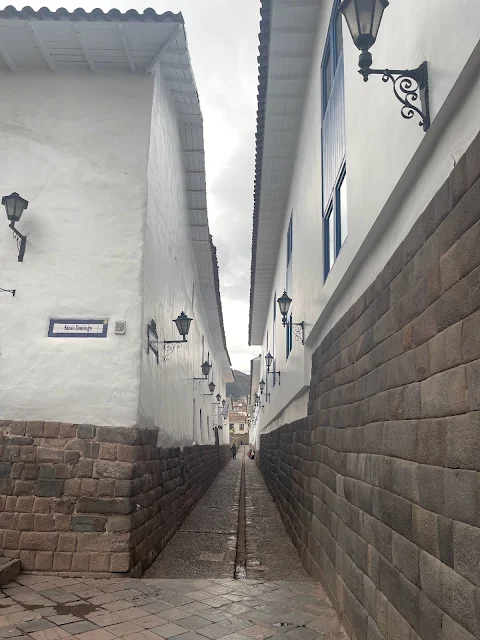






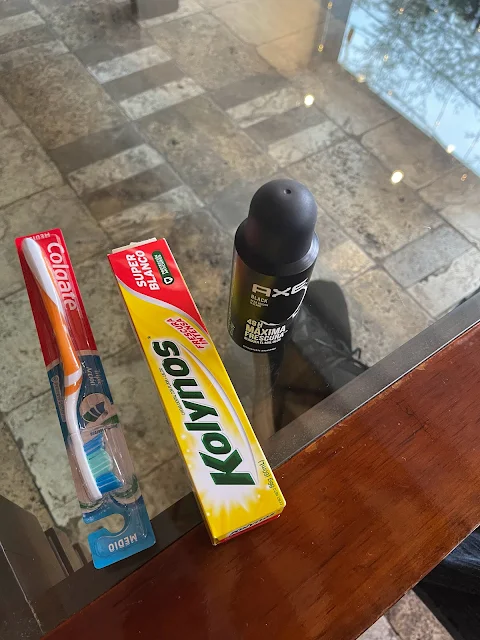



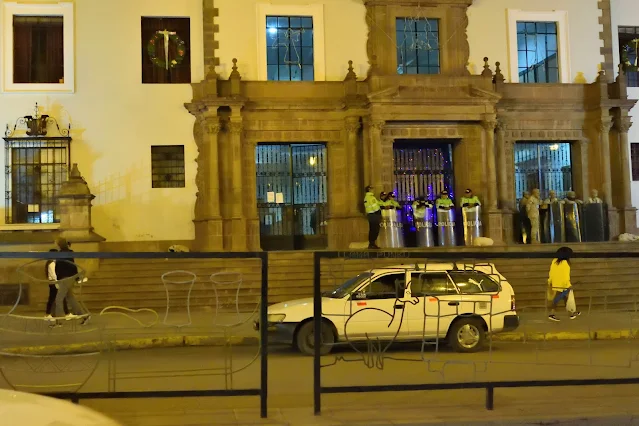

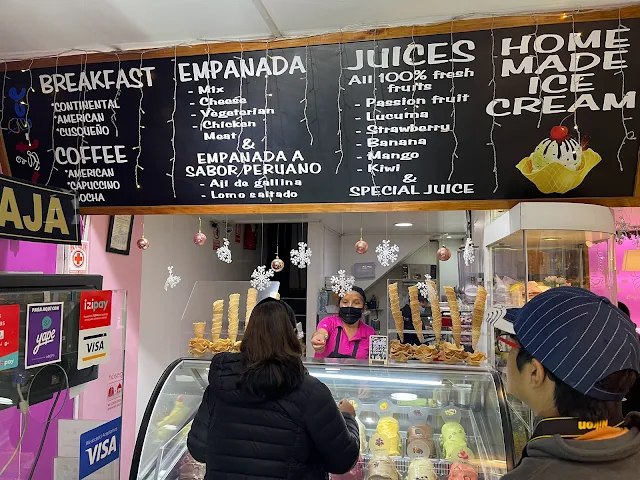







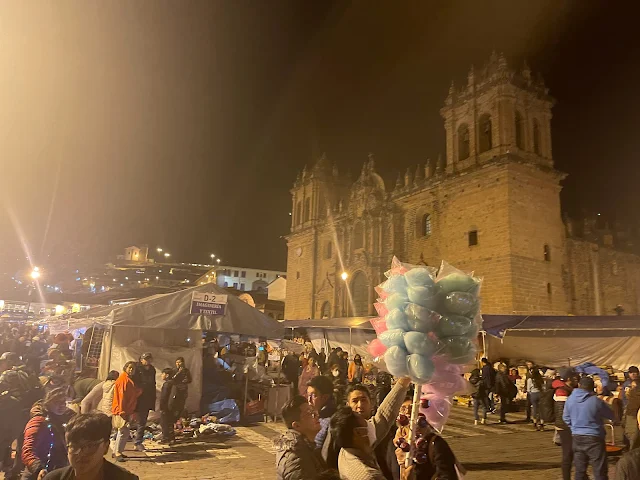






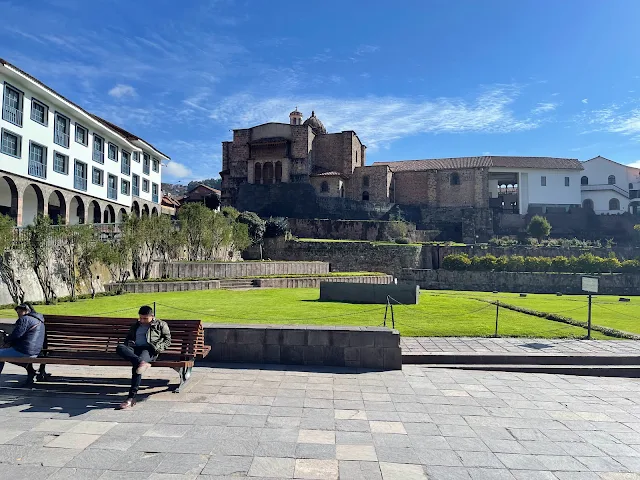




























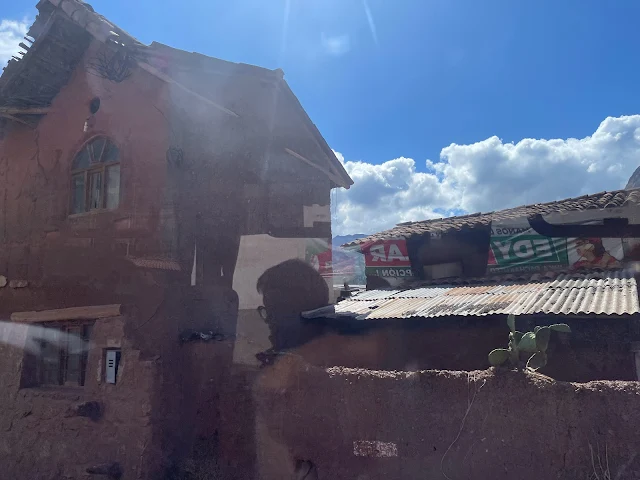





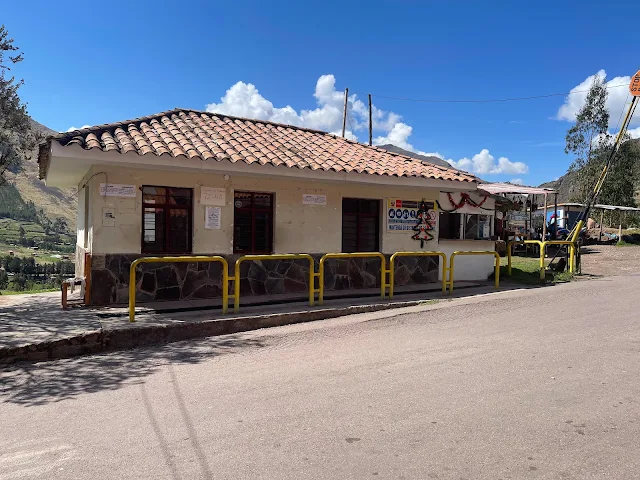





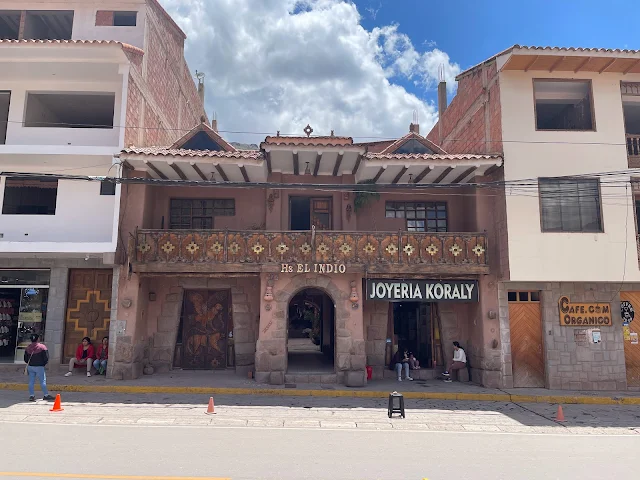






















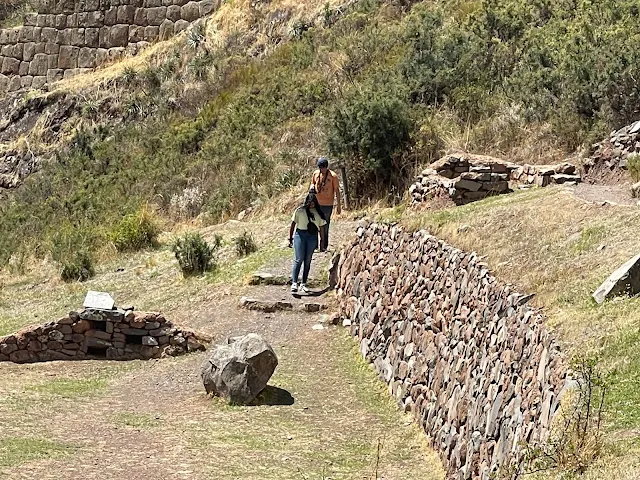








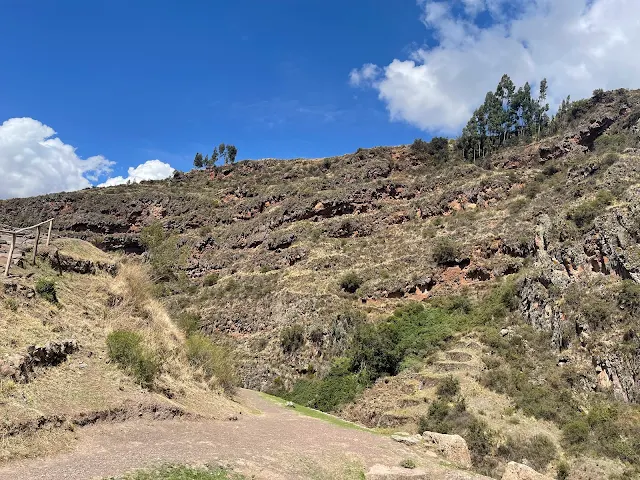



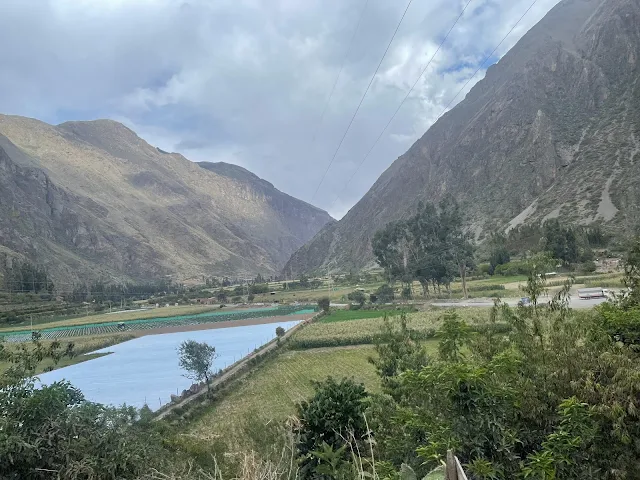















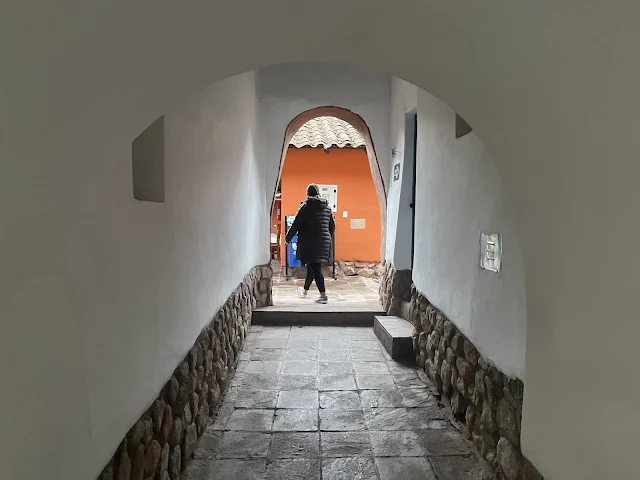

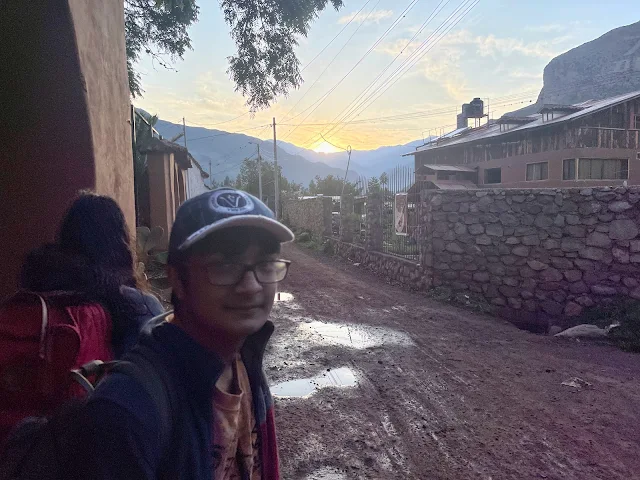

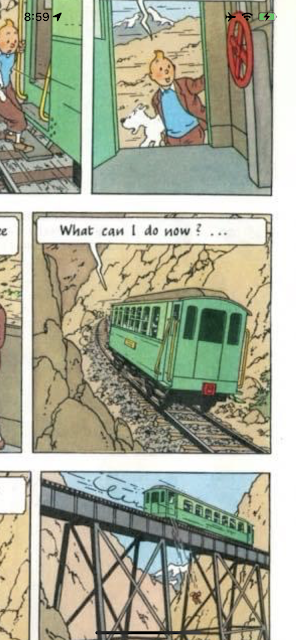



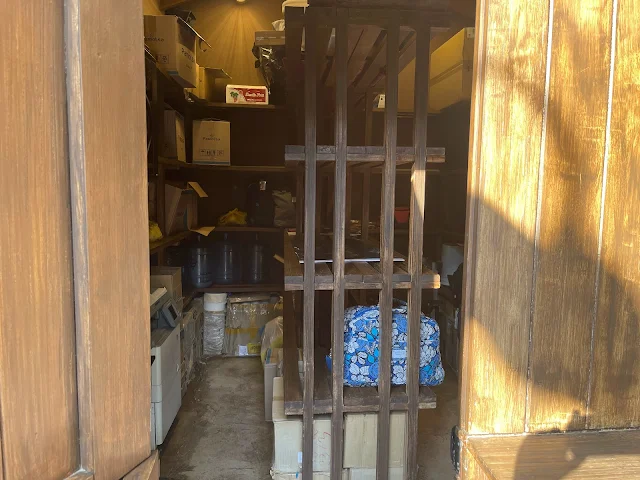








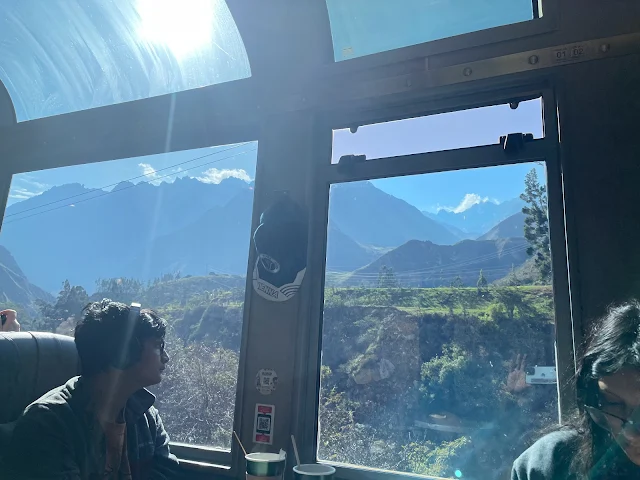





















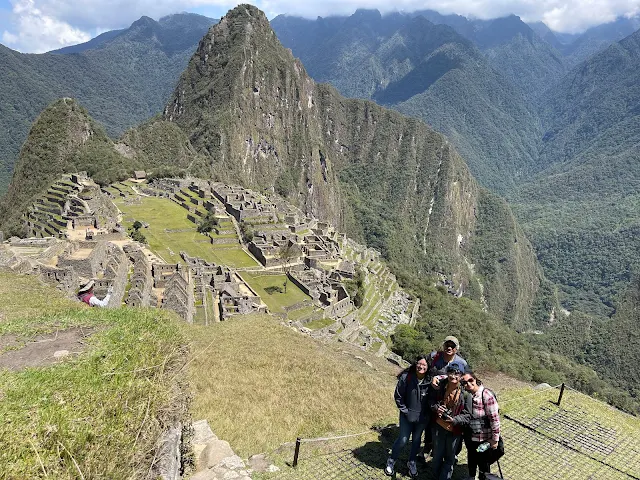



















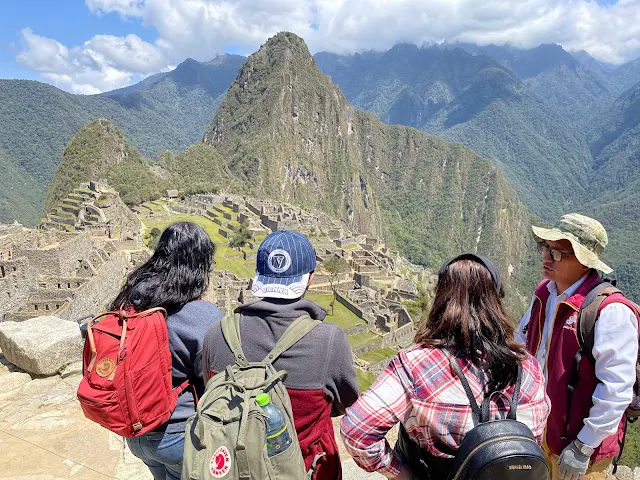



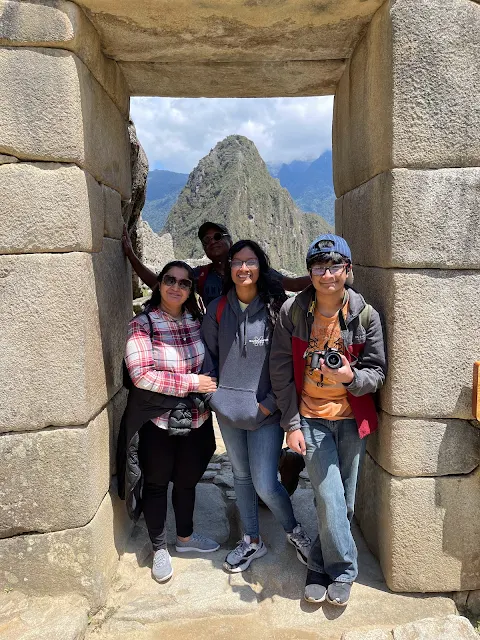






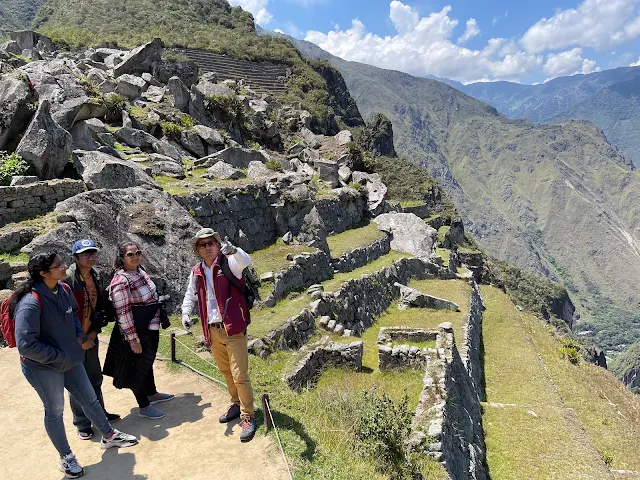

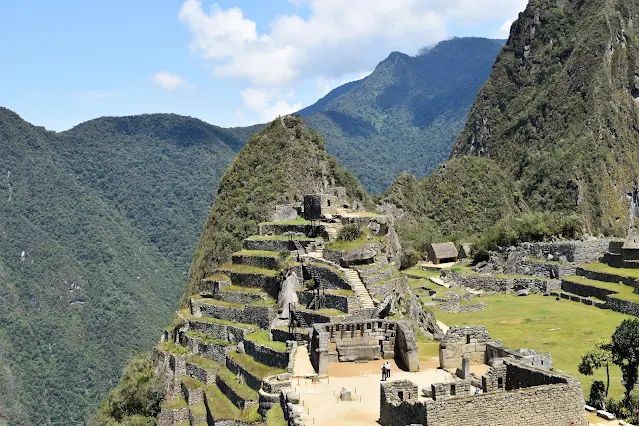


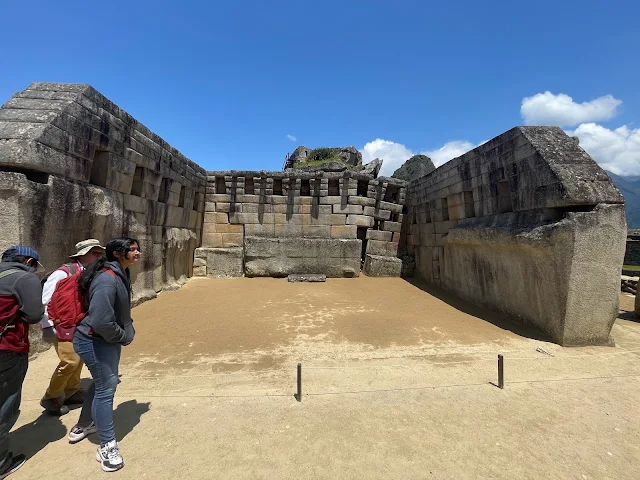
























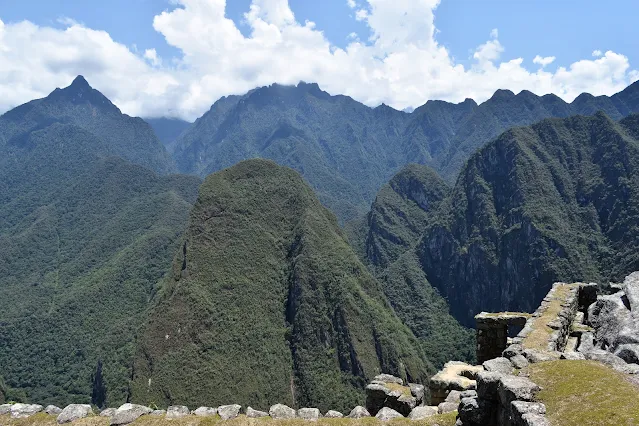

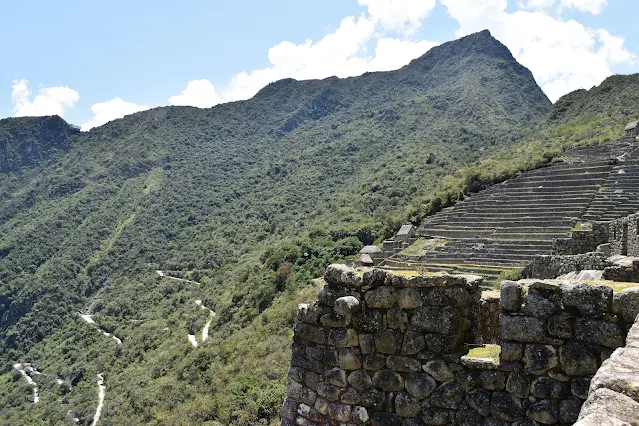



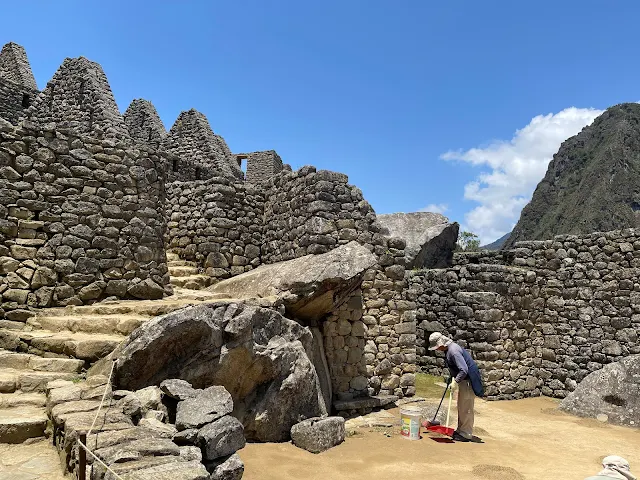




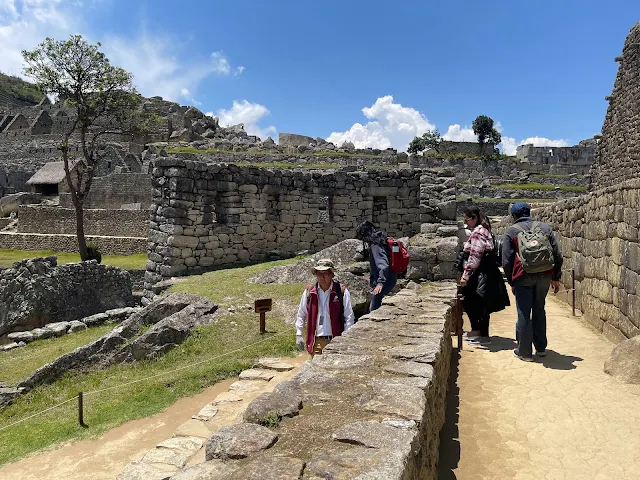
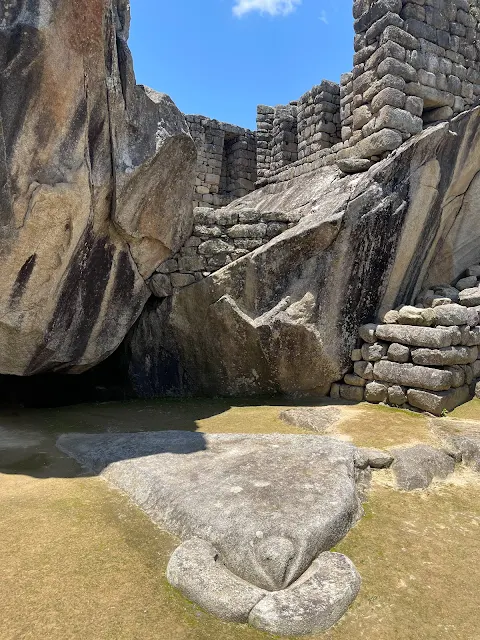


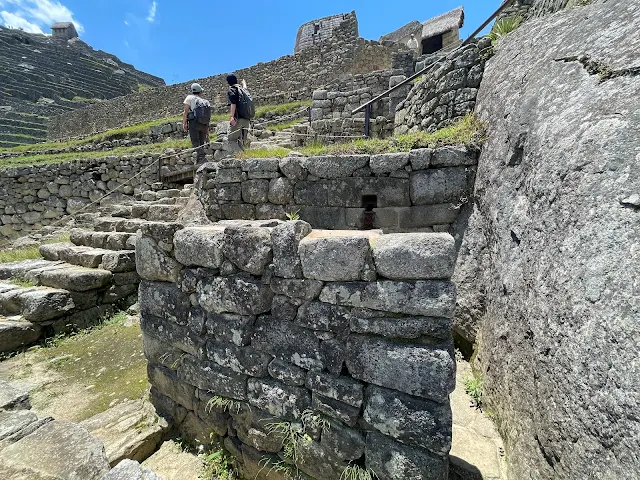
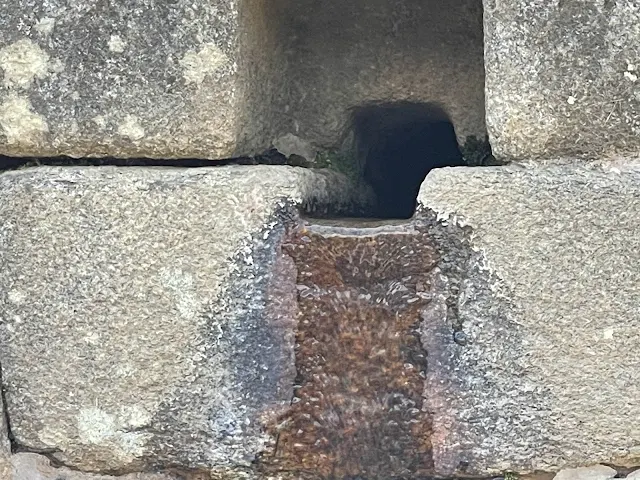
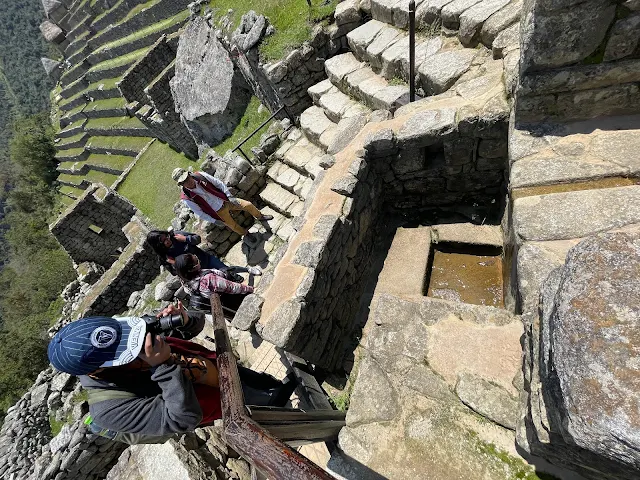





















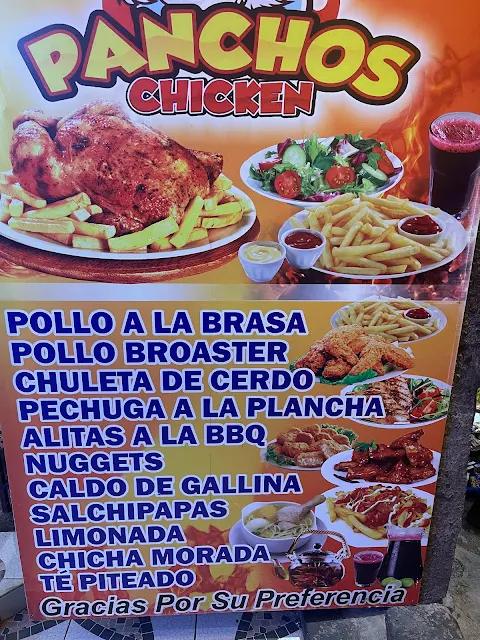














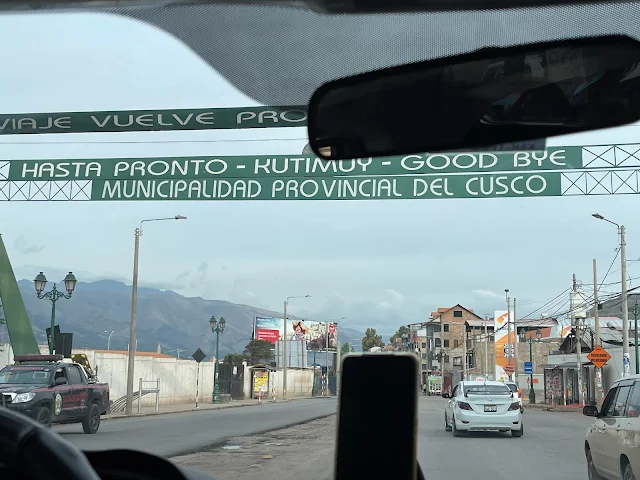



0 comments